Home | Products | Manufacturing | About | Purchasing | Shutter Release Cables
Shutter Release Cables
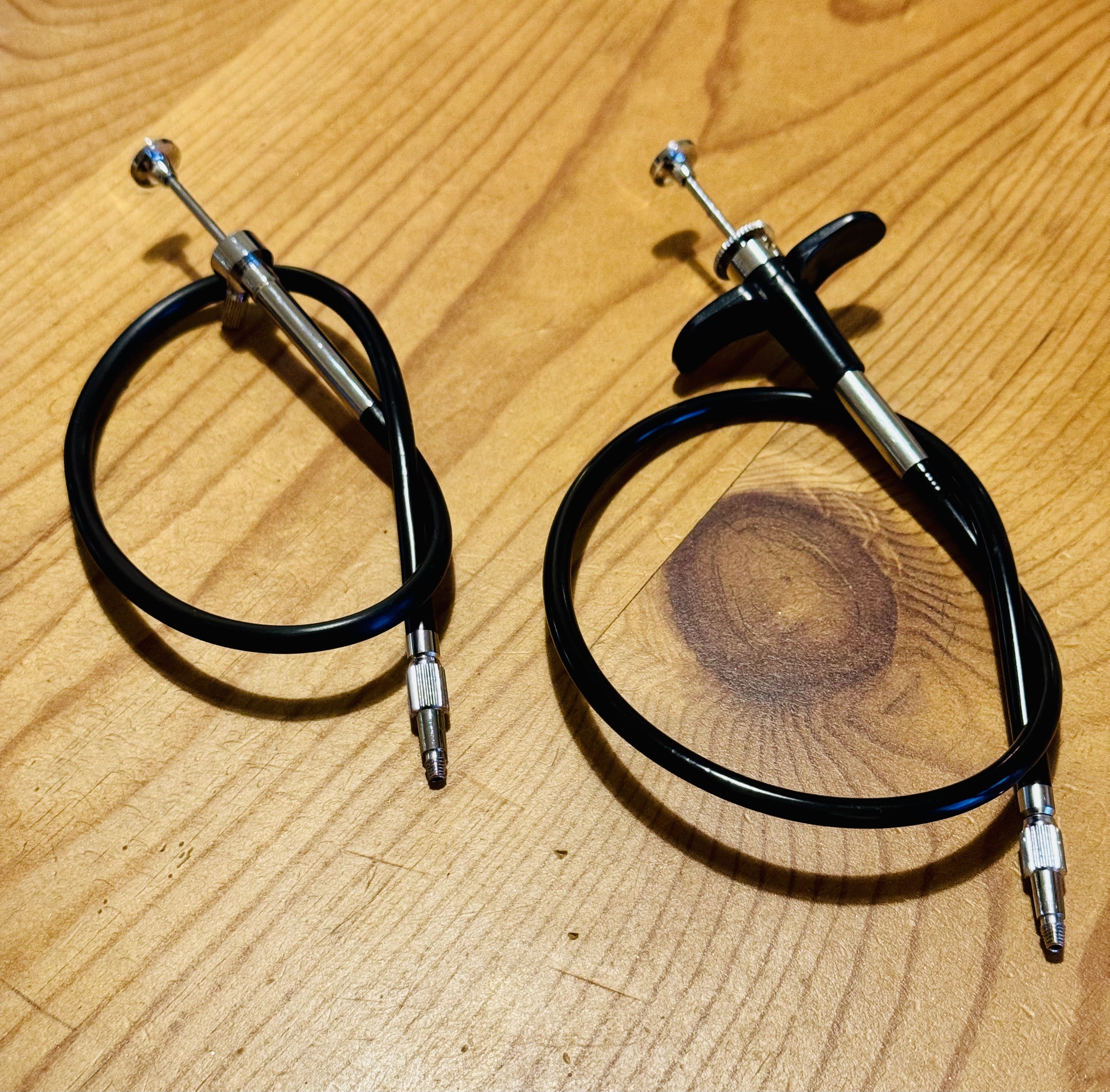 Two of my shutter release cables.
Two of my shutter release cables.
I get a lot of questions about shutter release cables so I thought I’d put some thoughts down about them.
Shutter release cables are an integral bit of kit for photographers. They allow us to use accessories and reduce camera shake. They come in a range of sizes and prices, but what is the difference between them? I’m not an expert, but I can tell you a bit about them. This is based on my experience of designing shutter firing systems around the capabilities and properties of these cables.
What is a shutter release cable?
A shutter release cable is generally a device with a trigger at one end and a mechanism to attach it to the camera at the other. Depressing the trigger will cause the camera shutter to fire. These may be electronic or mechanical. Both types connect to specific ports on the camera. These are designed to be flexible to allow the operator some freedom about where stand relative to the camera.
This article focusses on mechanical shutter release cables. These are Bowden cables, from Wikipedia:
A Bowden cable is a type of flexible cable used to transmit mechanical force or energy by the movement of an inner cable relative to a hollow outer cable housing.
These have a plunger at one end and a steel pin at the other. Depressing the plunger forces the steel pin to protrude from the cable. This mechanical force can fire a camera shutter or power an adapter such as those I design.
Operation
Its pretty straight forward, you screw the threaded head of the cable into the camera or receiving nut on the adapter. Depress the plunger to fire the shutter.
There are several different types to choose from:
1. Plunger with locking nut
Turn the locking nut to keep the plunger depressed.
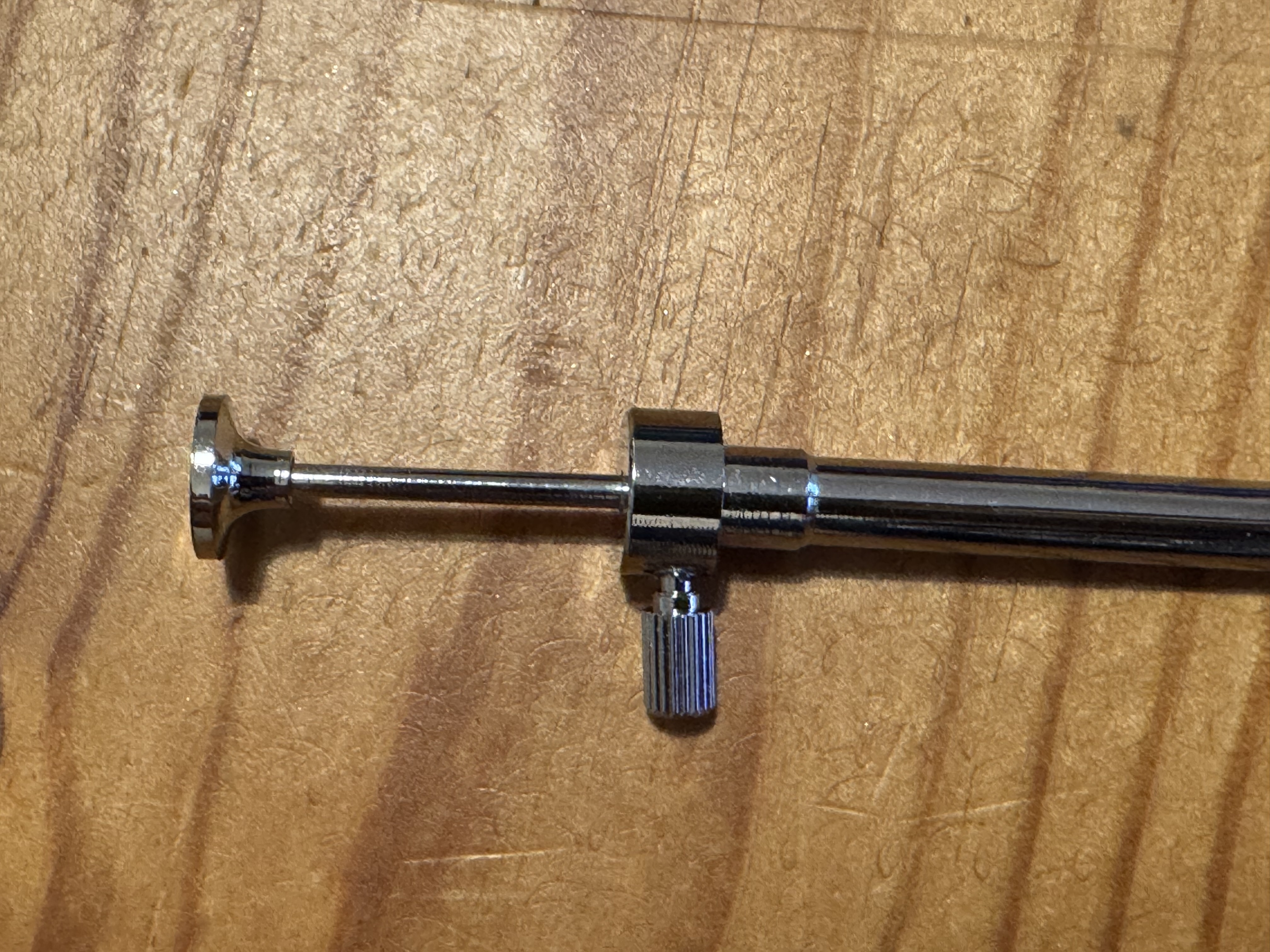 Shutter release cable with a locking nut.
Shutter release cable with a locking nut.
2. Plunger with locking disc
Depress the plunger and it will lock in place until you press the locking disc downwards to release it. Commonly you can change the mode of these by rotating the locking disc to disable / enable the automatic locking function.
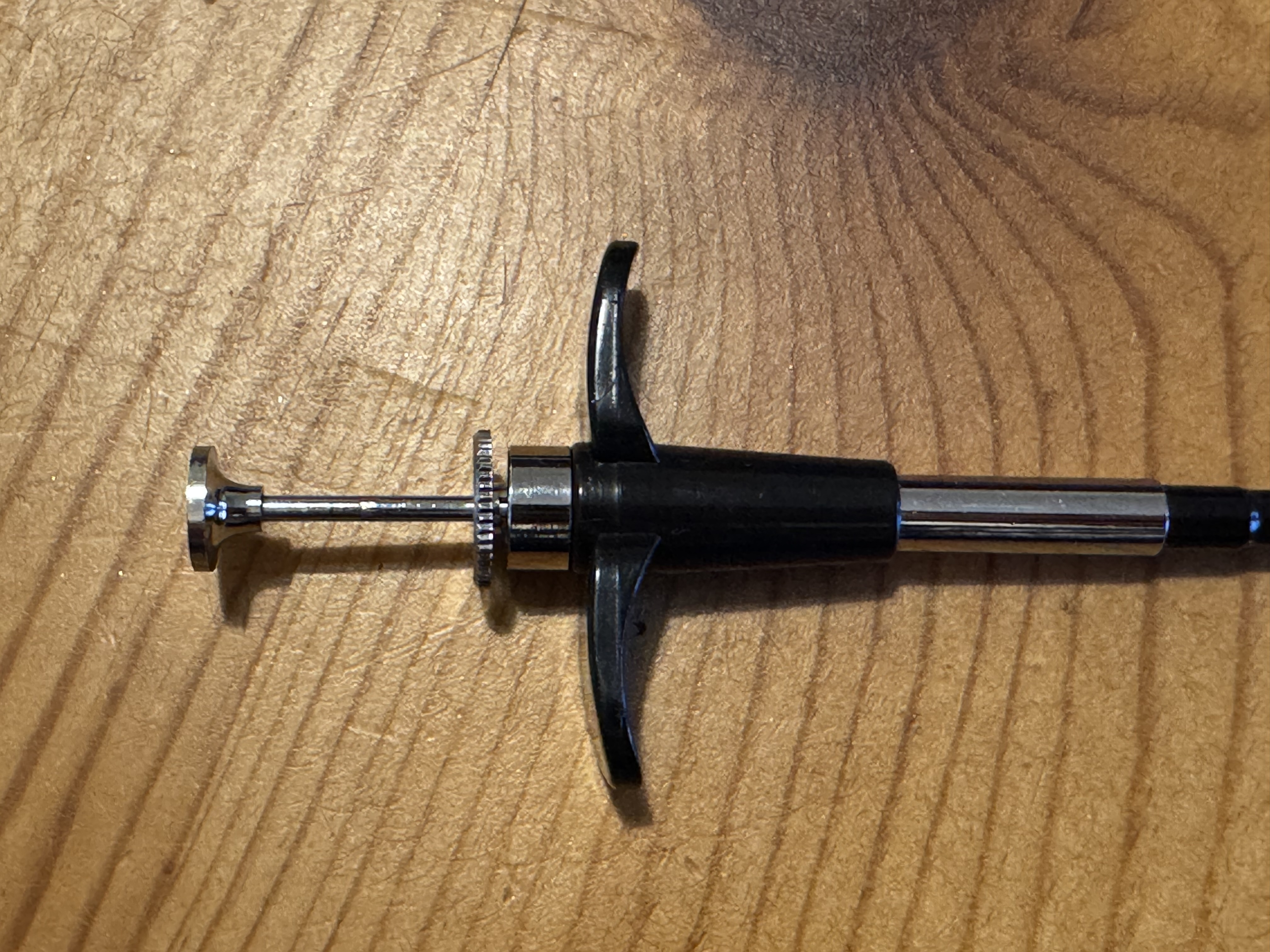 Shutter release cable with a locking disc.
Shutter release cable with a locking disc.
Which you use is personal preference, I have both.
Construction
Mechanical shutter release cables are typically consist of the following:
- a small helically wound compression spring with a plunger at one end and a steel pin at the other - this transmits the force applied by the operator
- an inner sheath consisting of a helically wound extension spring
- a middle sheath which is typically a cloth construction
- a pvc outer
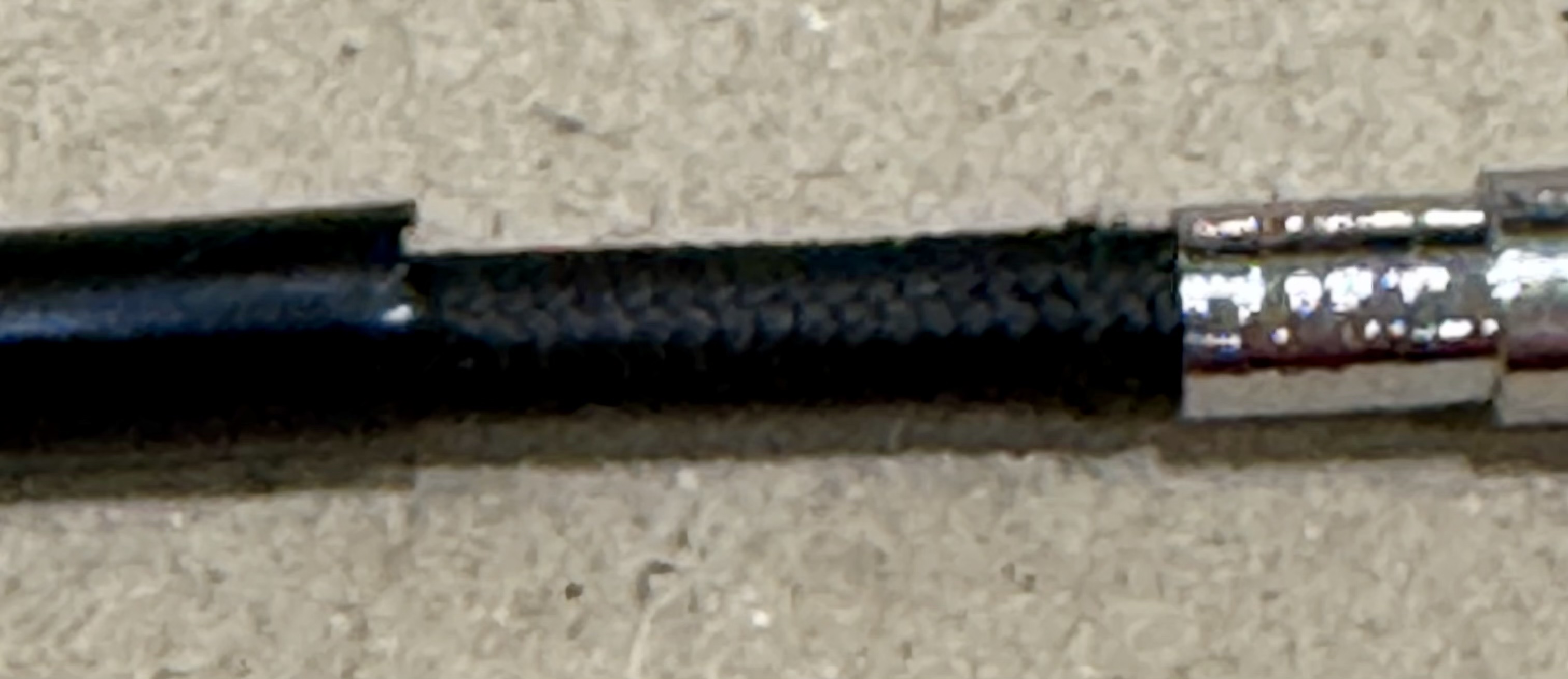 Generic cable with part of PVC removed showing cloth inner.
Generic cable with part of PVC removed showing cloth inner.
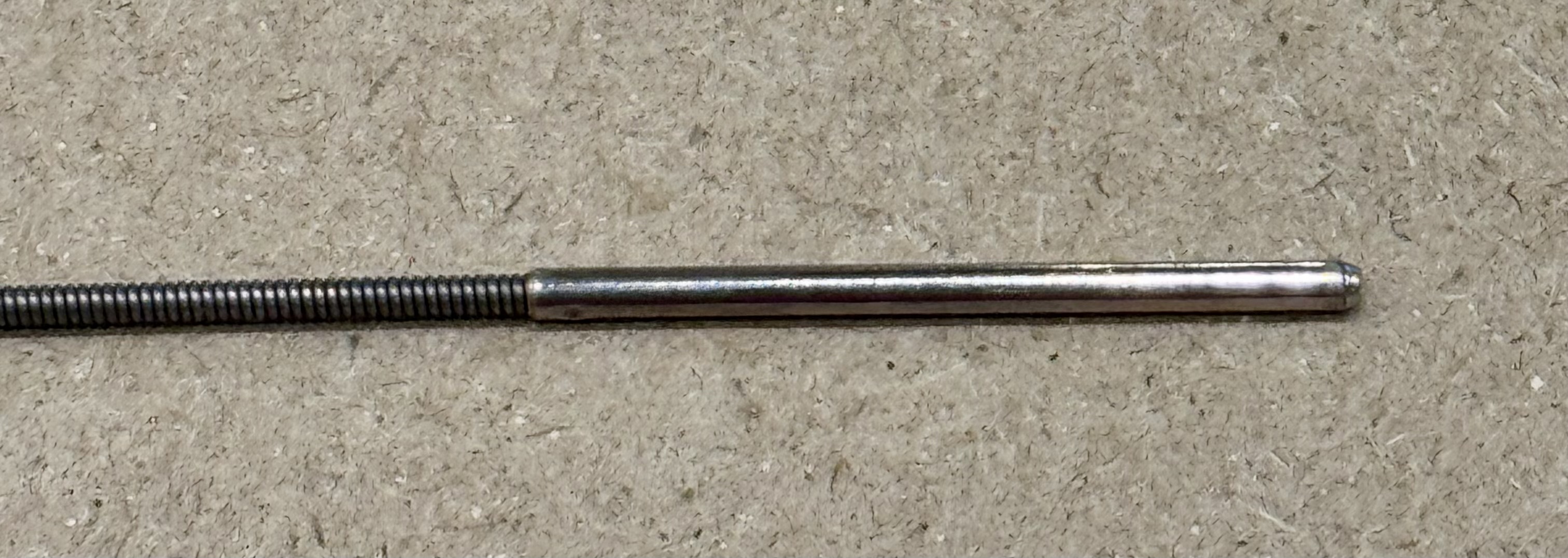 The force spring and pin from a generic cable.
The force spring and pin from a generic cable.
Common problems
These are the main problems I have encountered with these cables.
1. Wear on threads at the pin end
Some cables use softer metal in the threaded housing. Over time means the threads fail to bite, rendering the cable useless. This isn’t particularly a problem if the cable is inexpensive.
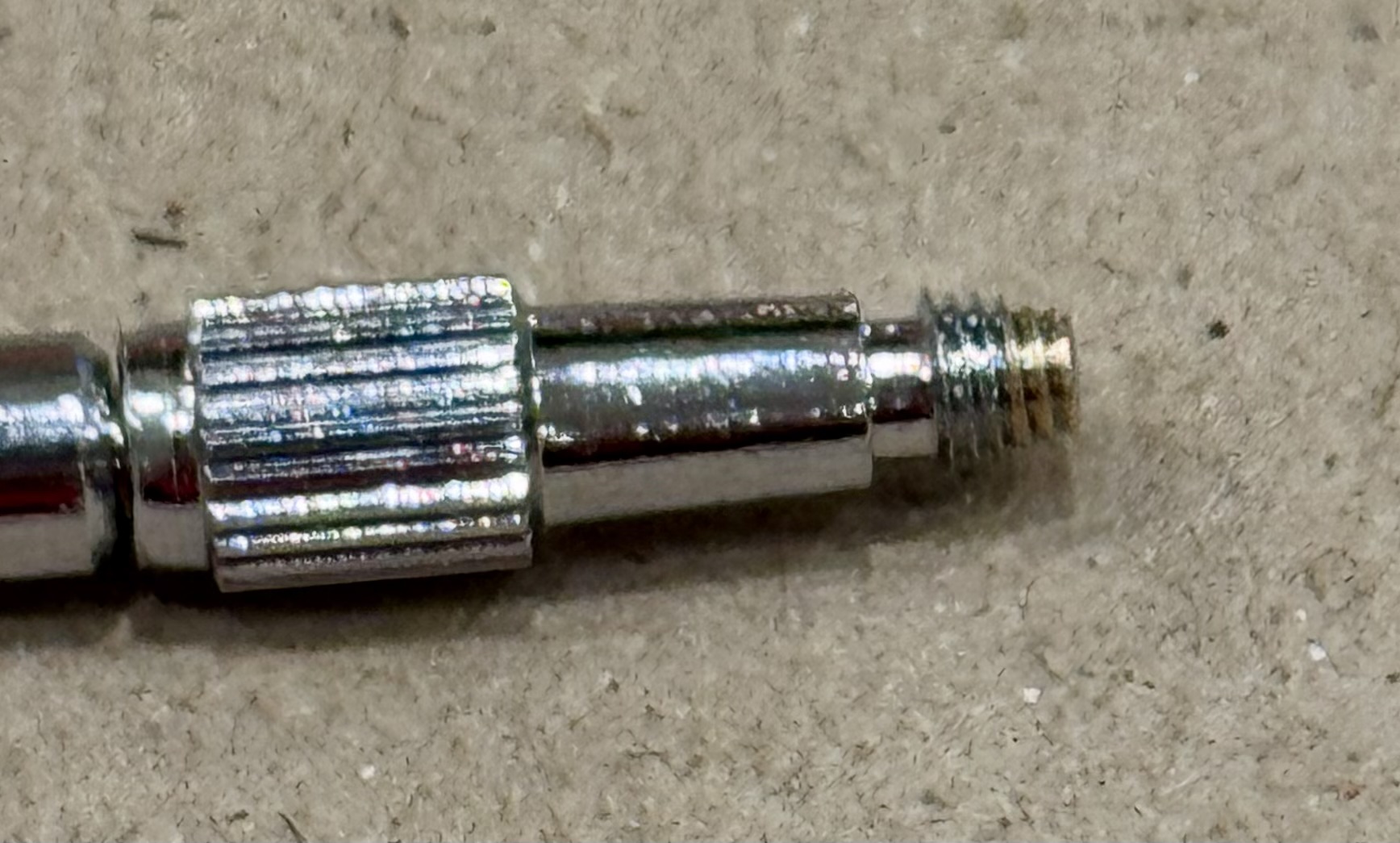 Closeup showing wear to the end of one of my cables.
Closeup showing wear to the end of one of my cables.
2. Inner sheath is not fixed to the plunger or threaded housing
Some cables do not fix the inner sheath into the housing at each end. This must be an ease / cost of construction decision. These cables rely on the PVC outer sheath to stop the inner sheath from being forced away from each end of the shutter release cable through use. Over time the PVC typically stretches, reducing the force applied by action of the plunger and reducing the distance the pin travels.
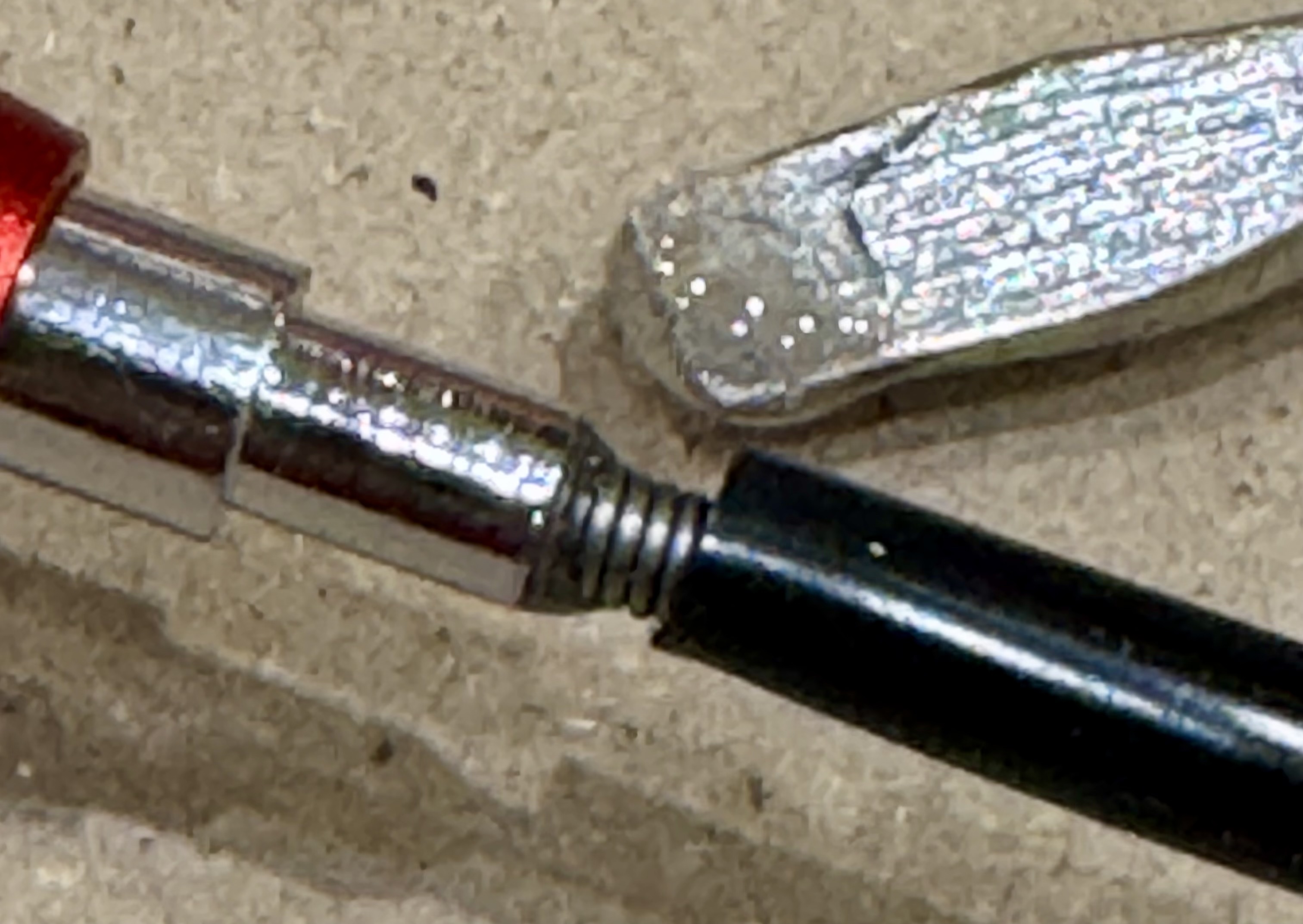 One of my attempts to repair a generic cable which has detached at the plunger end.
One of my attempts to repair a generic cable which has detached at the plunger end.
3. Inner sheath extension spring is not very strong
Some cables may expand slightly when a force is applied to the plunger. You can see this happening if you put your thumb over the end of the cable at one end and depress the plunger at the other. This is the PVC outer and spring inner expanding under force. It happens as the steel pin and force spring meet resistance they push against the housing materials. This reduces the force applied by action of the plunger and reduces the distance the pin travels.
4. Force spring is not very strong
The force spring may compress under tension which means rather than transmitting all of the force applied ot the plunger it stores some of it whilst under tension. This reduces the force applied by action of the plunger and reduces the distance the pin travels.
5. Sticking cables
Due to wear and tear related to the above problems cables may not release correctly, meaning that after they have fired the shutter they can stick in position or the steel pin may not fully retract. Annoying if the photo you are taking requires a smooth action.
The latter four issues tend to occur more frequently on longer cables in my experience.
Solutions
The only solutions I have to these issues are to replace cheaper cables moire often, or buy more expensive cables.
What cables do you use?
I tend to use generic cheap cables for most of my adapters, such as this one.
However, for cameras such as the Belair X 6-12 which have a stiff shutter button I will use a higher quality cable such as the Kaiser 6109.
